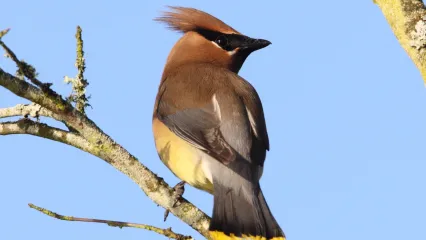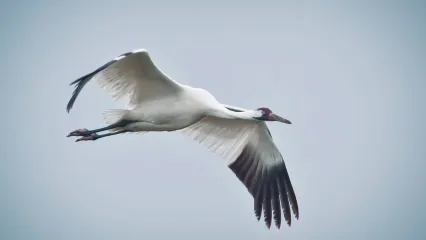
Description
This fairly small songbird is a little larger than a sparrow. It has sleek and soft-looking plumage. Its head, neck, back and chest are a warm brown. Its belly is a pale yellowish color and its wings and tail are grayish. It has a distinctive crest and black mask on its face. Its tail is tipped with a yellow band and some individuals show red spots on the tips of their wing feathers. Cedar waxwings are often confused with the female cardinal because of its crest and yellowish-brown plumage. They may also be confused with the Bohemian Waxwing, but it does not normally occur in Oklahoma.
Size
Approximately 5.5-6.7 inches long. Wingspan of 8.7-11.8 inches.
Habitat
This songbird is most commonly found in the eastern two-thirds of the state. This bird prefers thickets and abundant shrub cover.
Life Cycle
At feeders, cedar waxwings occasionally eat fruits (dried berries, raisins, currants and apple slices) and miracle meal. They are more likely attracted to water and to fruit-bearing trees and shrubs. Away from feeders they primarily eat fruit but will also eat flying insects.
How To Observe
A very social birds, cedar waxwings are almost always found in flocks. Flocks of 30 to 120 birds is common, but it has been seen in flocks of over 300 birds.


